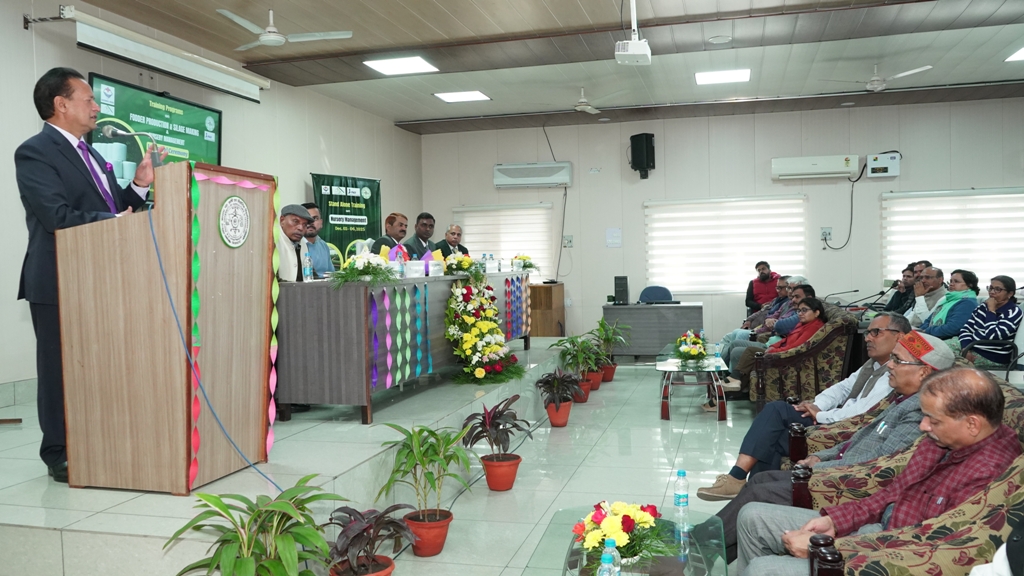By Dr. Bharat Pandey,
M.Sc, Ph.D., FLS (London), Government PG College, Ranikhet, Almora
In today’s rapidly evolving technological era, the convergence of ancient wisdom with modern science is not only fascinating but also essential. Sanskrit, often revered for its spiritual and literary heritage, holds a treasure trove of scientific knowledge that is increasingly relevant in solving contemporary global challenges. As the world seeks innovative solutions for complex problems, the ancient texts of Sanskrit, particularly those related to science, offer profound insights that can shape modern technological advancements.
### **Sanskrit: The Language of Science and Precision**
Sanskrit is widely regarded as one of the most precise languages ever created, and its structure allows for the clear expression of complex scientific concepts. Ancient Indian scholars, such as Aryabhata, Sushruta, and Charaka, wrote extensively in Sanskrit on topics ranging from astronomy and mathematics to medicine and botany. The texts that survive today are testimony to an advanced understanding of natural phenomena and scientific principles that were far ahead of their time.
In modern times, we see a resurgence in exploring these texts to gain new perspectives on sustainability, healthcare, and even artificial intelligence. For example, Panini’s grammar of Sanskrit is often compared to the algorithms used in computational linguistics. Sanskrit’s syntactic clarity is influencing modern computer science, and there are ongoing studies to explore how this ancient language could contribute to the future of machine learning and AI development.
### **Bridging Ancient Wisdom with Modern Science**
The rich tradition of science in Sanskrit texts is not confined to theoretical knowledge but also practical applications. Ayurvedic medicine, for instance, which is rooted in Sanskrit texts like the “Charaka Samhita,” is now gaining global recognition for its holistic approach to healthcare. In a world grappling with chronic diseases, mental health issues, and environmental degradation, ancient systems of knowledge like Ayurveda offer preventive and curative measures that align with modern scientific discoveries in wellness and alternative medicine.
Similarly, ancient Indian texts such as the “Sushruta Samhita” describe surgical procedures and medicinal plants with remarkable accuracy. Modern medicine can learn much from these detailed accounts, especially in the fields of pharmacology and natural healing. This blending of traditional wisdom with modern science can lead to the development of sustainable healthcare systems that are affordable and accessible to all.
### **Relevance of Sanskrit in Today’s Technological Era**
Sanskrit is not merely a relic of the past but a key to unlocking new frontiers in science and technology. The resurgence of interest in Sanskrit’s role in modern computational models is proof of its lasting significance. Researchers are now exploring how Sanskrit can contribute to the development of algorithms that are both efficient and resilient, especially in the context of artificial intelligence and data processing. Sanskrit’s precision and structure can potentially play a pivotal role in designing better programming languages, enhancing computer algorithms, and developing more sophisticated AI systems.
Moreover, Sanskrit’s holistic approach to life, as seen in its vast array of literature on environmental balance and sustainable living, is critically important in today’s era of climate change and resource depletion. Concepts like “Prakriti” (nature) and “Vriksha Ayurveda” (tree medicine) that stem from Sanskrit texts are guiding modern environmentalists and scientists toward creating sustainable practices in agriculture, conservation, and ecological restoration.
### **Ancient Solutions for Future Challenges**
The pressing challenges of the 21st century—climate change, healthcare crises, resource management, and technological advancements—require innovative and sustainable solutions. Sanskrit’s scientific heritage offers valuable insights into how ancient societies addressed similar issues. For instance, the focus on harmony with nature, sustainable use of resources, and holistic approaches to health and well-being in Sanskrit texts can inspire new models of development that prioritize both human advancement and ecological preservation.
In agriculture, ancient texts like the “Krishi-Parashara” provide detailed information on crop rotation, soil fertility, and weather prediction, knowledge that is critical for today’s sustainable farming practices. Likewise, ancient architectural texts in Sanskrit, which emphasize eco-friendly building techniques, are influencing modern architects who are designing green buildings and smart cities.
### **Conclusion: A New Paradigm for the Future**
In an era where technology and tradition often seem at odds, Sanskrit offers a bridge between the two. The fusion of ancient scientific knowledge with cutting-edge technological advancements can lead to innovative solutions that are both sustainable and forward-thinking. By embracing the wisdom of Sanskrit, we can not only rediscover our past but also chart a course for a better, more balanced future.
Sanskrit is far more than a classical language; it is a repository of scientific thought that holds the potential to transform the way we approach the world’s most pressing challenges. Whether it’s through modern medicine, AI, environmental science, or sustainable technology, Sanskrit has the power to shape the future in ways we are only beginning to understand. It is high time that we reintegrate this ancient wisdom into modern discourse, harnessing its potential to solve the problems of today’s complex and dynamic world.








